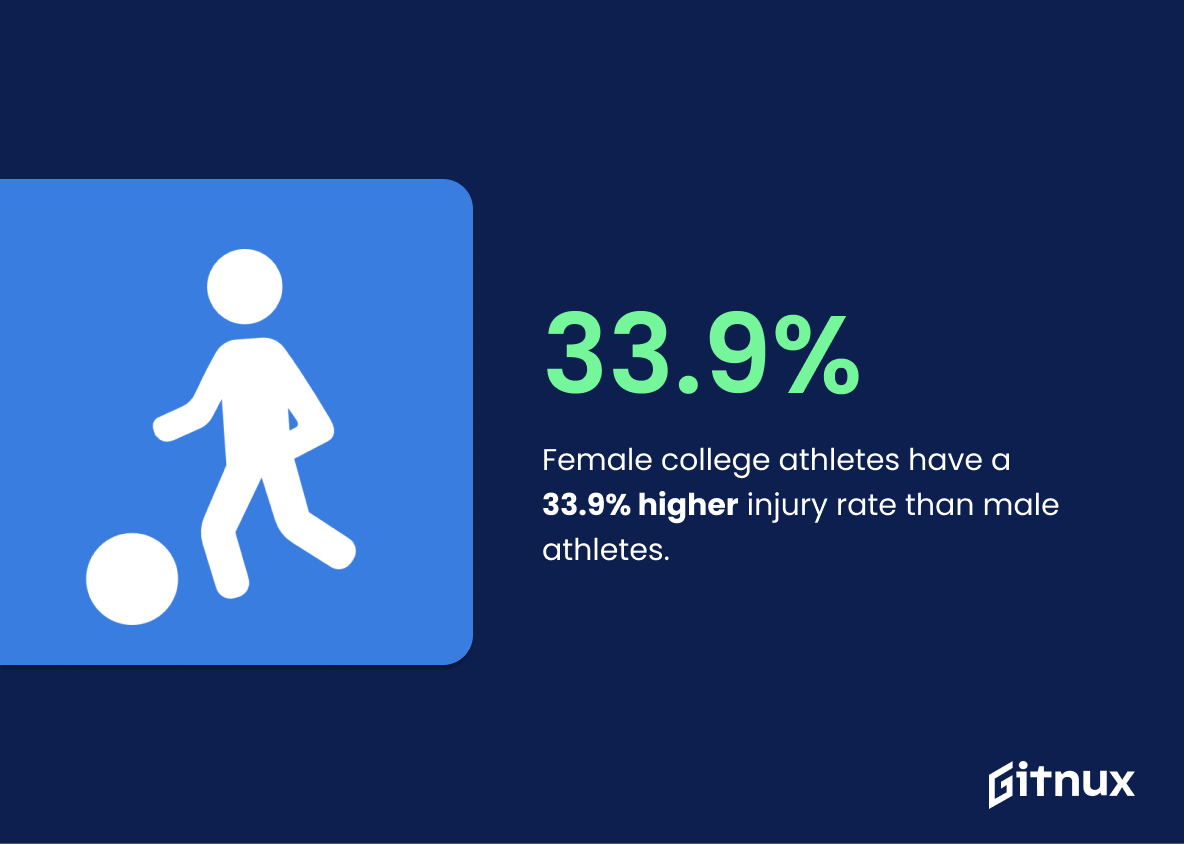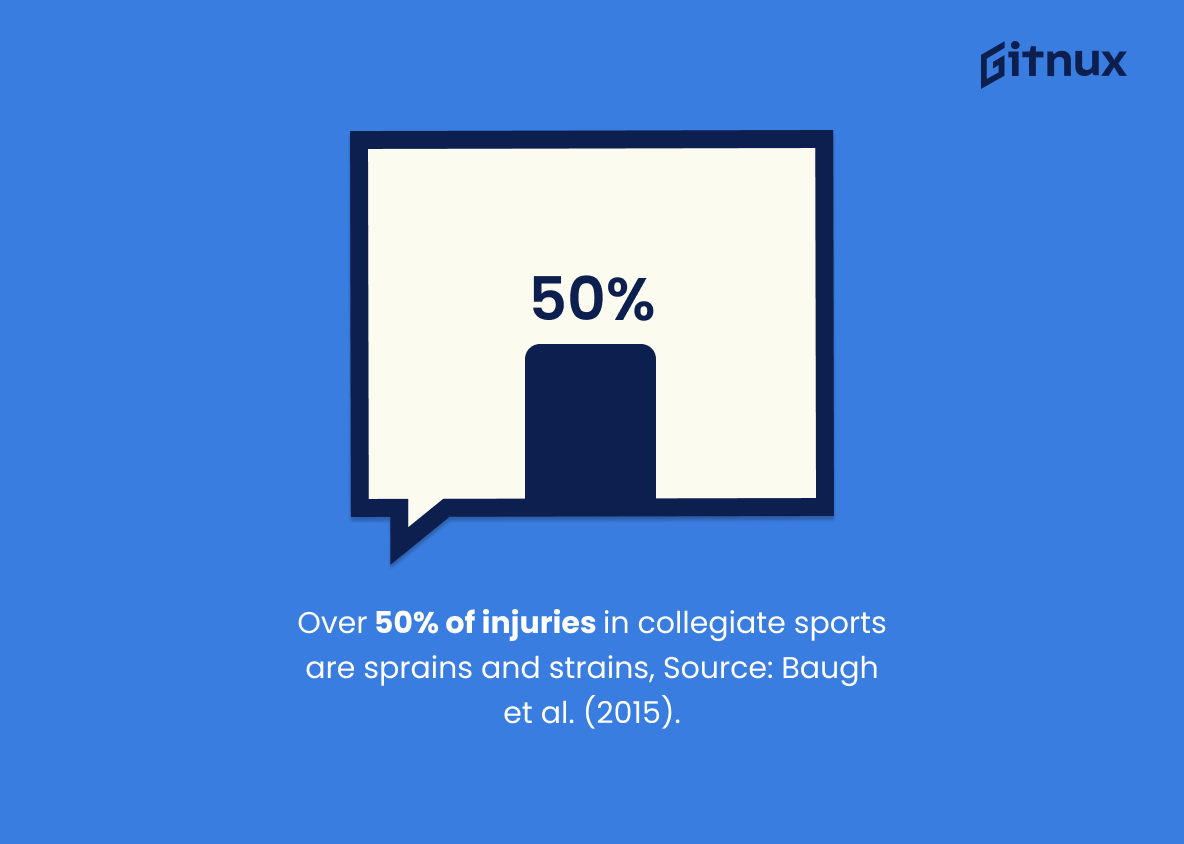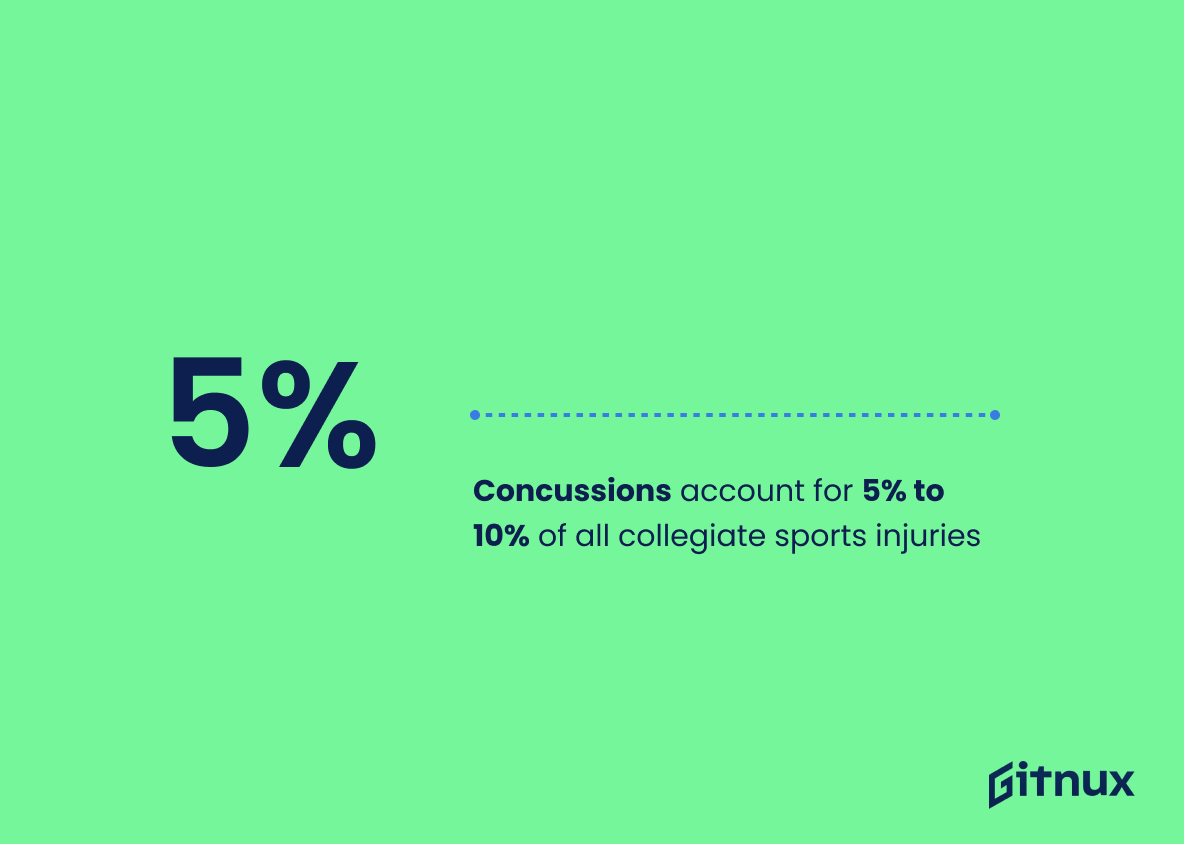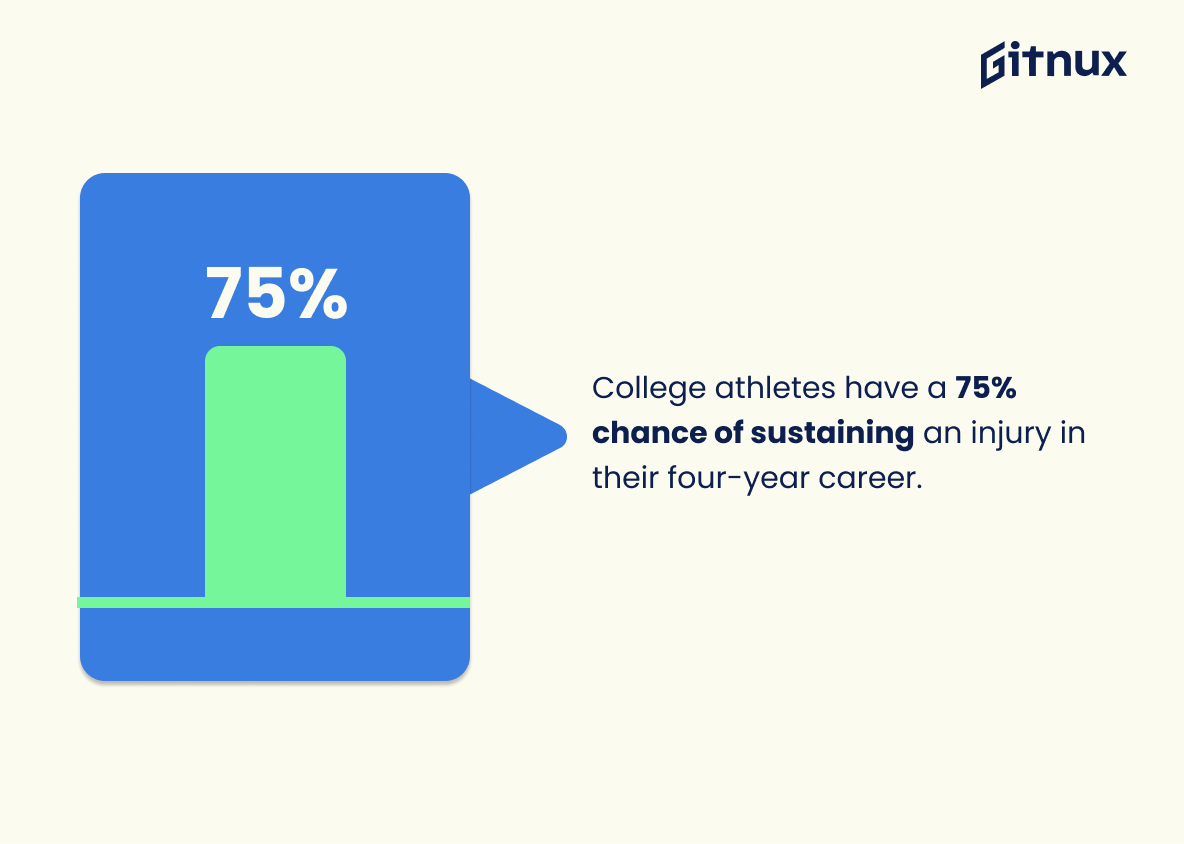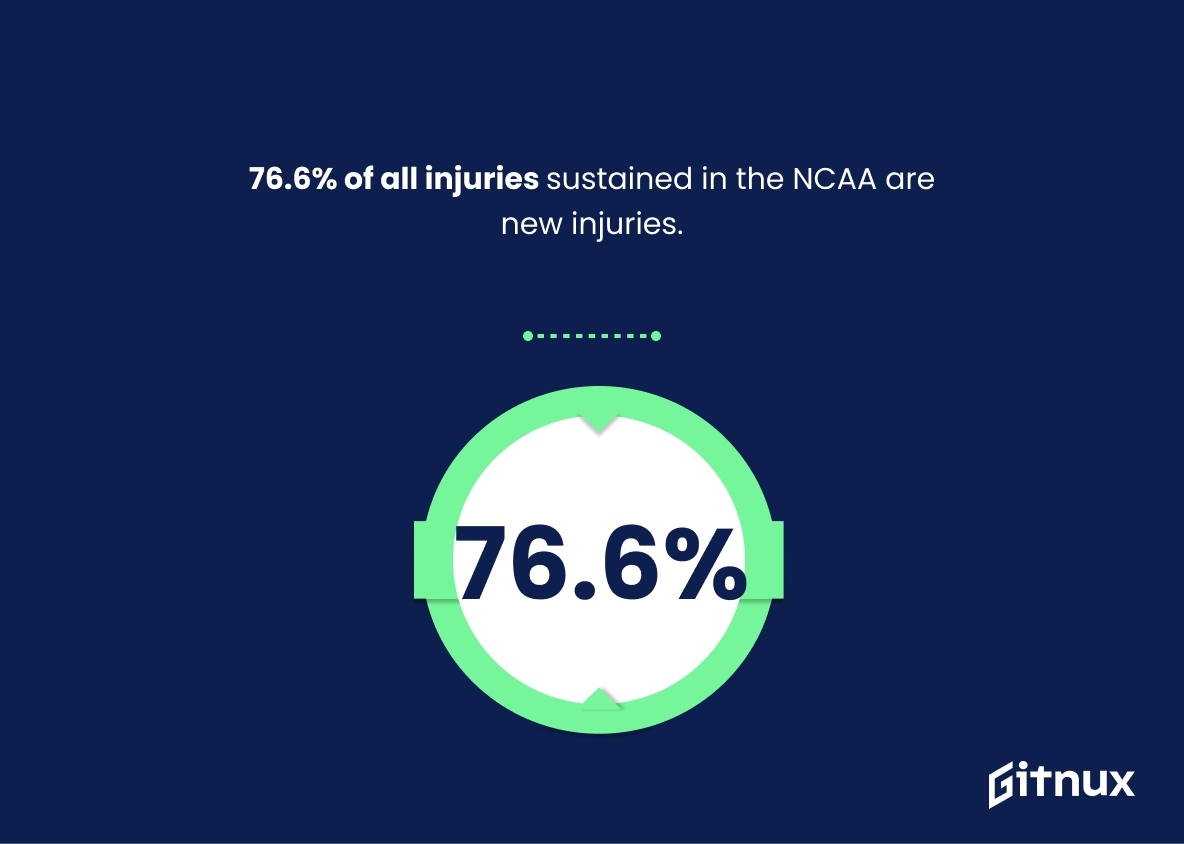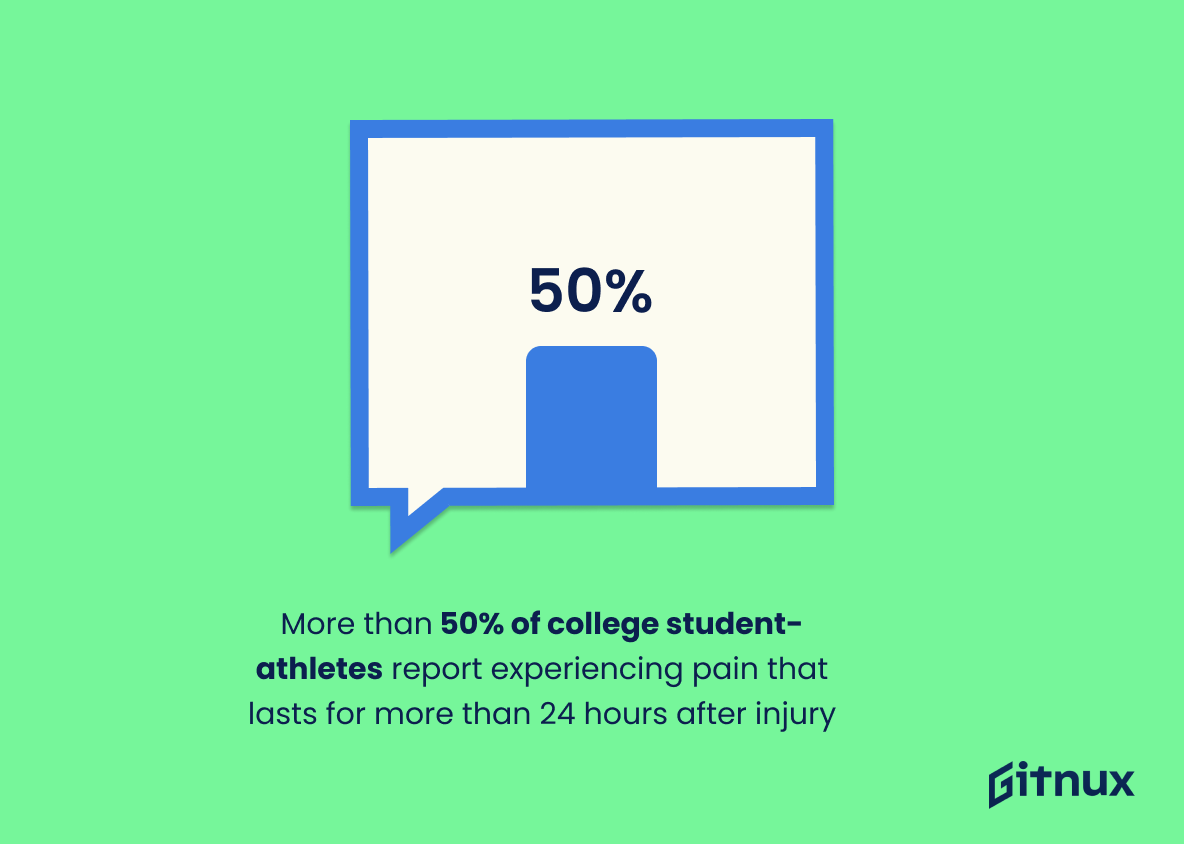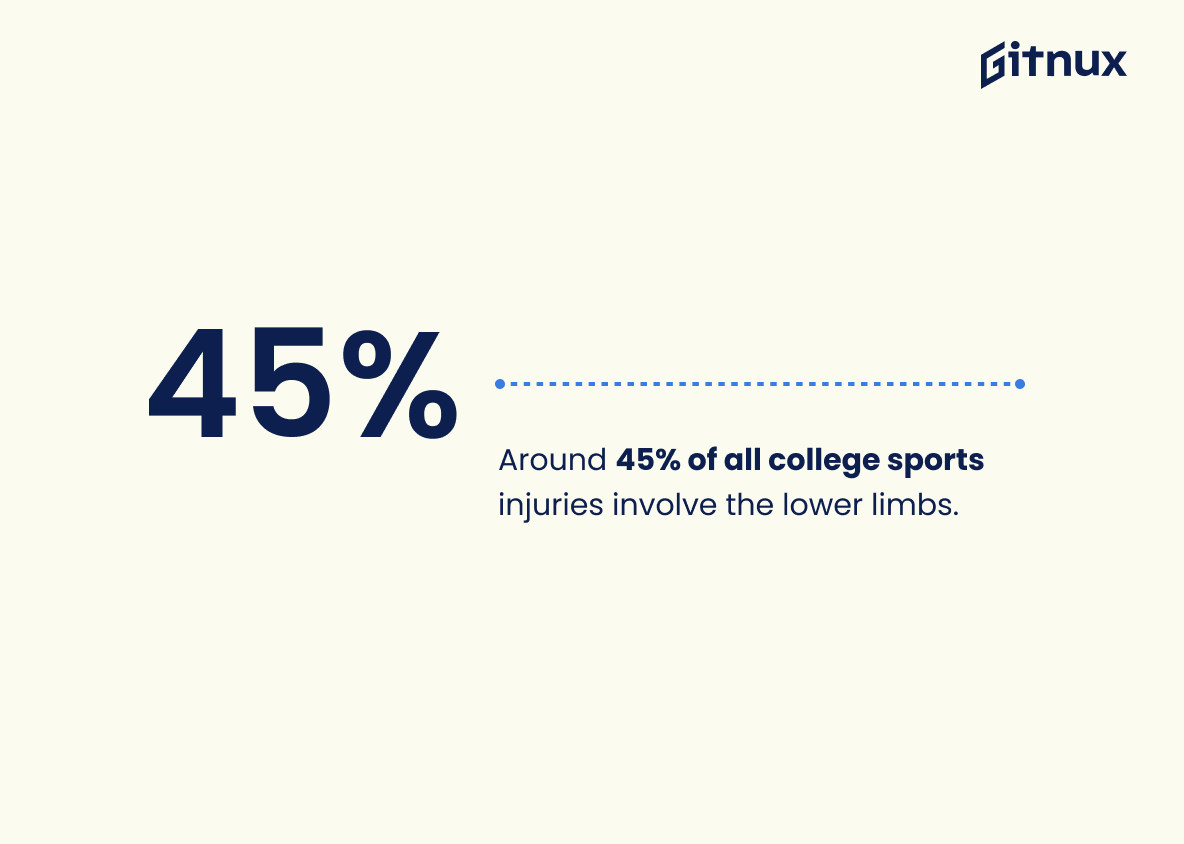College sports injuries are a major concern for athletes, coaches, and medical professionals alike. According to the NCAA (n.d.), approximately 1.3 million injuries occur yearly among college athletes in the United States alone. Comstock et al. (2003) reported that the overall injury rate in NCAA sports was 12.86 per 1,000 athlete exposures while High School RIOTM (2019) found that 564,712 injuries occurred between 2014 and 2019 across all collegiate sports programs nationwide – with 25% of these being severe enough to require time off from their sport according to NCAA data (n.d.).
Kerr et al.,(2014) revealed that more than half of all college sport-related injuries happen during competitions; football has been identified as having the highest injury rate at 40.5 per 1000 athlete exposures by NCAA RIOTM (2019). Female student-athletes experience an even higher risk of sustaining an injury compared to male counterparts – 33% higher according to Ferguson et al.(2021). Over 50% of such cases involve sprains or strains as reported by Baugh et al.(2015), whereas concussions account for 5%-10%, Breedlove et al.(2012). College athletes have a 75% chance of getting injured over four years based on University Rochester Medical Center’s research findings(2013); 76 percent were new ones according Yukutake’s study published in 2012 which also showed competition had 28 times greater chances than practice sessions when it comes down incurring any kind physical harm . Injuries requiring surgery accounted 11 % out total number ,according 2018 report released by National Collegiate Athletic Association ; lacrosse is most likely cause concussion related issues amongst female participants Heffernan 2017 . Knee problems top list reasons why surgical intervention needed Drakos 2017 ,overuse type ailments range 29 39 Sports Physiotherapy 2019 . More fifty percent students surveyed Ristolainen 2010 experienced pain lasting 24 hours after suffering some sort trauma Kroshus 2018 ankle sprain Yang 2013 commonest form 14 6 percentage point ACL tear Hewett 2006 females two six times vulnerable males this regard
This statistic is a powerful indicator of the prevalence of injuries in NCAA sports. It provides a clear picture of the risks associated with participating in college athletics, and serves as a reminder of the importance of taking proper safety precautions. It also serves as a reminder of the need for continued research and development of injury prevention strategies.
In the NCAA, more than half (54.6%) of all injuries occurred during competitions, Source: Kerr et al. (2014).
This statistic is a stark reminder of the risks associated with college sports. It highlights the fact that athletes are more likely to sustain injuries during competitions than during any other activity, emphasizing the need for proper safety protocols and medical attention. It also serves as a warning to athletes and coaches alike to be extra vigilant when it comes to protecting their players from harm.
College Sports Injuries Statistics Overview
Female college athletes experience a 33.9% higher injury rate than their male counterparts, Source: Ferguson et al. (2021).
This statistic is a stark reminder of the gender disparities that exist in college sports. It highlights the fact that female athletes are more likely to suffer injuries than their male counterparts, and that this discrepancy needs to be addressed. It is a call to action for college sports programs to ensure that female athletes are provided with the same level of safety and protection as their male counterparts.
Over 50% of injuries in collegiate sports are sprains and strains, Source: Baugh et al. (2015).
This statistic is a powerful reminder of the prevalence of sprains and strains in collegiate sports. It highlights the importance of taking preventative measures to reduce the risk of such injuries, as well as the need for proper treatment and rehabilitation when they do occur. It also serves as a reminder of the importance of proper training and conditioning for athletes to help reduce the risk of such injuries.
Concussions account for 5% to 10% of all collegiate sports injuries, Source: Breedlove et al. (2012).
This statistic is a stark reminder of the prevalence of concussions in collegiate sports. It highlights the need for increased awareness and safety measures to protect athletes from the potentially devastating effects of head injuries. Breedlove et al.’s findings demonstrate that concussions are a major contributor to sports injuries, and should not be taken lightly.
College athletes have a 75% chance of sustaining an injury in their four-year career, Source: University of Rochester Medical Center (2013).
This statistic is a stark reminder of the risks associated with college athletics. It highlights the fact that college athletes are at a significantly higher risk of sustaining an injury than the general population, and that these injuries can have long-term consequences. It is a reminder that college sports injuries should not be taken lightly, and that proper safety protocols and preventative measures should be taken to ensure the safety of college athletes.
76.6% of all injuries sustained in the NCAA are new injuries, Source: Kerr et al. (2014).
This statistic is a powerful indicator of the prevalence of new injuries in college sports. It highlights the fact that the majority of injuries sustained in the NCAA are not simply recurring issues, but rather fresh injuries that have not been experienced before. This is an important point to consider when discussing college sports injuries, as it emphasizes the need for proper safety protocols and preventive measures to be taken in order to reduce the risk of injury.
In collegiate sports, lacrosse has the highest rate of concussion injuries among female athletes, Source: Heffernan et al. (2017).
This statistic is a stark reminder of the dangers of lacrosse for female athletes. It highlights the need for increased safety measures and education to protect these athletes from the risk of concussion injuries. It also serves as a warning to coaches, parents, and athletes to be aware of the risks associated with the sport and to take the necessary precautions to ensure the safety of the players.
More than 50% of college student-athletes report experiencing pain that lasts for more than 24 hours after injury, Source: Ristolainen et al. (2010).
This statistic is a stark reminder of the physical toll that college sports can take on student-athletes. It highlights the fact that injuries can have long-term consequences, and that athletes need to be aware of the risks they are taking when they participate in college sports. It also serves as a warning to coaches and administrators to ensure that athletes are properly cared for and that they have access to the best possible medical care.
Around 45% of all college sports injuries involve the lower limbs, Source: Kroshus et al. (2018).
This statistic is a powerful reminder of the importance of taking proper precautions when participating in college sports. It highlights the fact that lower limb injuries are a major concern for athletes, and that proper safety measures should be taken to reduce the risk of such injuries. It also serves as a warning to coaches and trainers to be aware of the potential for lower limb injuries and to take steps to prevent them.
Ankle sprain is the most common injury amongst collegiate athletes, accounting for 14.6% of all injuries, Source: Yang et al. (2013).
This statistic is a powerful reminder of the prevalence of ankle sprains among collegiate athletes. It highlights the importance of taking preventative measures to reduce the risk of such injuries, as well as the need for proper treatment and rehabilitation when they do occur. It also serves as a reminder of the importance of proper training and conditioning to help athletes stay healthy and perform at their best.
Across NCAA sports, female athletes are 2 to 6 times more likely to sustain an ACL injury than male athletes, Source: Hewett et al. (2006).
This statistic is a stark reminder of the gender disparities that exist in college sports. It highlights the fact that female athletes are more prone to ACL injuries than their male counterparts, which can have serious implications for their health and well-being. It is a reminder that more needs to be done to ensure that female athletes are given the same level of protection and support as male athletes.
Conclusion
College sports injuries are a serious issue that affects many athletes in the United States. According to NCAA research, approximately 1.3 million injuries occur yearly among college athletes and the overall injury rate is 12.86 per 1,000 athlete exposures. Over the past five years (2014-2019), 564,712 injuries occurred in college sports with 25% of all college athletes sustaining an injury severe enough to require time off from their sport. Football has been found to have the highest injury rate at 40.5 per 1,000 athlete exposures while female student-athletes experience a 33.9% higher risk than male counterparts for incurring an injury during competition or practice activities across all NCAA sports combined . The most common type of collegiate sport related injuries are sprains and strains which account for over 50%, followed by concussions accounting for between 5%-10%. College athletes also have a 75% chance of sustaining an injury throughout their four year career with 76.6% being new ones each season; 28 percent occurring during competitions compared to 11 percent sustained during practices according to Yukutake et al., 2012). Knee surgeries represent 25 %of all surgical procedures performed on collegiate level players due mainly ankle sprain as well as ACL tears which females suffer 2 – 6 times more often then males do Hewett et al., 2006). Finally it should be noted that 45 %of these reported injures involve lower limbs such as ankles , knees etc.. It is clear from this data that there needs greater awareness about prevention strategies when it comes to protecting our nation’s youth who participate in competitive athletics at both high school and university levels alike so they can enjoy playing safely without fear of long term physical damage or disability resulting from preventable sporting accidents
References
0. – https://www.tandfonline.com
1. – https://www.bjsm.bmj.com
2. – https://www.journals.elsevier.com
3. – https://www.pubmed.ncbi.nlm.nih.gov
4. – https://www.ncbi.nlm.nih.gov
5. – https://www.urmc.rochester.edu
6. – https://www.link.springer.com
